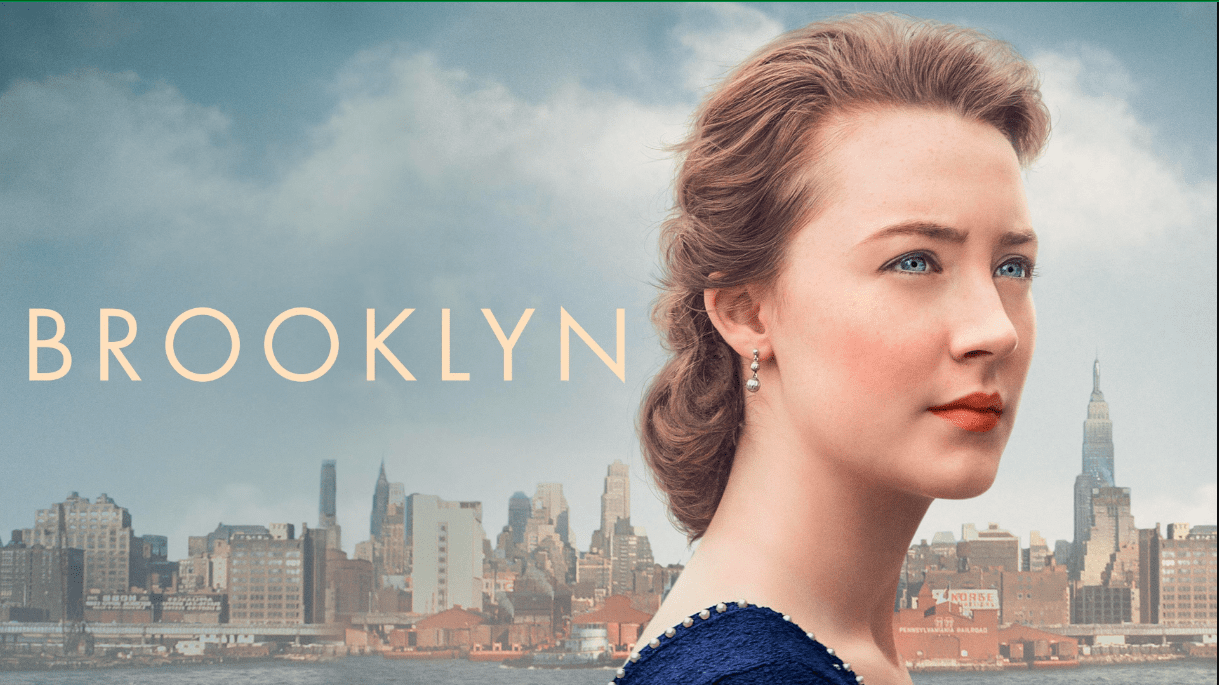
Brooklyn Plot Summary:
An Irish immigrant lands in 1950s Brooklyn, where she quickly falls into a new romance. When her past catches up with her, however, she must choose between two countries and the lives that exist within.
There’s been a lot of talk lately about immigration in America. Without getting too bogged down in the topic, suffice it to say that it’s a divisive issue. Amid all the debate, it can be nice sometimes to be reminded of our roots as immigrants. Many people here now are the descendants of Irish immigrants who moved here en masse in the 19th and 20th centuries (myself included). It’s easy to forget what that feeling of leaving your home is like, so many generations removed from the departure. But if you ever wanted to know, Brooklyn provides a powerful look into the life and mind of an Irish immigrant to America.
Brooklyn follows Eilis Lacey (Saoirse Ronan) (pronounced “ay-lish” and “seer-sha” if you were wondering), a young girl from Ireland who moves to Brooklyn to build a new life for herself. Trailers made much of the love triangle present in the film, between Eilis, her Italian boyfriend Tony (Emory Cohen) from Brooklyn and an Irish boy, Jim Farrell (Domhnall Gleeson). It’s not an inaccurate showcase of the movie, but it is a little misleading. The love triangle is not really the main focus, but simply the most obvious expression of Eilis’ torn feelings between the new life she is building for herself in America and her old life and family back in Ireland. This is the real conflict at the heart of the movie: an immigrant who loves her new home but can’t forget the old one.
By the nature of its singular focus on Eilis, the weight of this movie’s success rests in large part on Saoirse Ronan’s shoulders. A bad performance in the role would have sunk it entirely, but thankfully Ronan more than delivers. At every stage of Eilis’ development, she is able to perfectly depict her thoughts and feelings: her timidity, her intense homesickness, her growing confidence, her anguish, her love. What’s more, Ronan makes this growth feel natural. Every scene that goes by, with everything that happens to her, Ronan gradually transforms her performance along with Eilis. Through the course of the movie, Eilis goes from a nervous girl who needs all the help she can get to make it through the trip to America to a confident young woman dispensing advice of her own, and Ronan depicts the entire journey with grace and skill.
Ronan isn’t solely responsible for the film’s success though. Its supporting cast adds greatly to its charm, from the giddy and gossipy girls in Eilis’ boardinghouse, to her stern landlady Madge Kehoe (Julie Walters), to the kindly Father Flood (Jim Broadbent), to Tony’s extremely Italian family. It’s hard not to smile for much of the movie, as it’s suffused with a gentle humor that makes you chuckle and leaves you feeling warm. And that warm feeling makes the dramatic moments, when they come, land all the harder for the contrast. It’s a masterful use of precision tone changes that heightens both the lighter and heavier moments, and makes the whole movie a thoroughly enjoyable experience.
The movie deserves praise for being absolutely gorgeous too. Every shot is beautiful: establishing shots of the New York skyline; wide shots of both American and Irish beaches; even intimate close-ups of Eilis, both her eyes shining brightly as she stares with equal parts sadness and determination. Its use of color in particular is worth noting. Brooklyn is filled with bright pastels highlighted by deeper colors, a rich palette that looks wonderful. And the way in which the movie uses color to help tell its story is pretty impressive too. At the beginning in Ireland, everything is all earthy greens and blues. When Eilis makes it to America, the color palette opens up, exposing us to more and brighter colors as she becomes more and more accustomed to life in America. Then when she returns to Ireland, everything is green and blue again, but now in more varied shades, and slightly highlighted by other colors, representing not only how Eilis views her home country after being away for so long, but also how she herself has changed. It’s a really nice touch, subtly reinforcing everything the movie is going for throughout its runtime.
At their best, movies can make you really feel the experiences of another person. They can draw you in and help you understand what someone else is going through. Brooklyn absolutely achieves that. We feel what Eilis is feeling at any given moment. We feel her heartbreak and loss as powerfully as we feel her joy and love. And through the trials of this one specific person, we get a sense for the broader struggles of people who have left their homes for something better and feel torn by that decision, who miss the people and places they’ve left behind. It’s a very romantic, optimistic take on that struggle, of course, nothing particularly challenging or deep. But it’s no less beautiful or heartfelt for that, and most certainly still a wonderful movie.
Rating: 9 out of 10


Comments are closed.